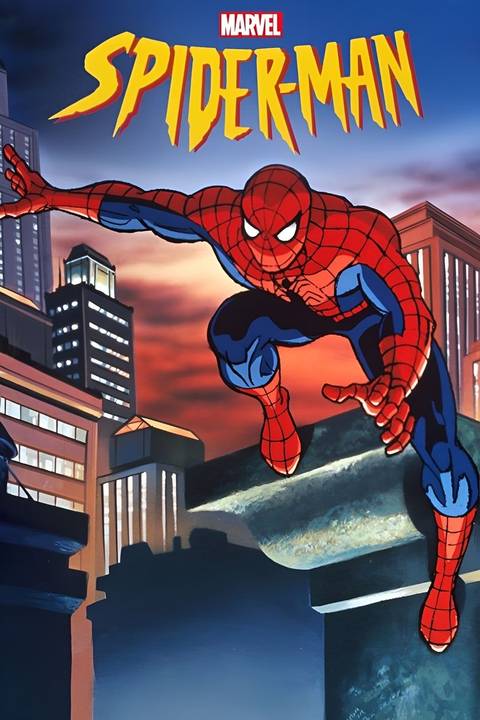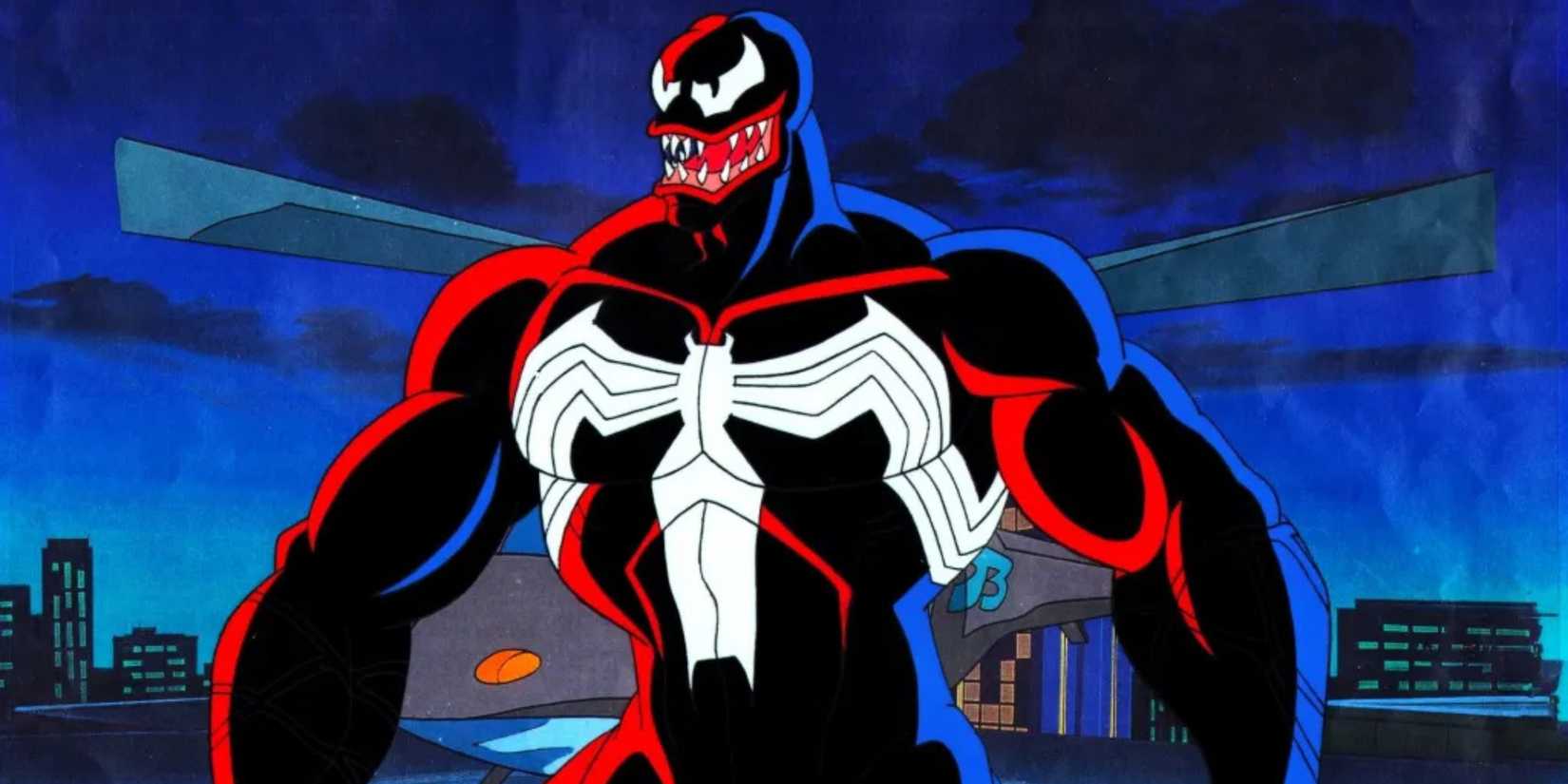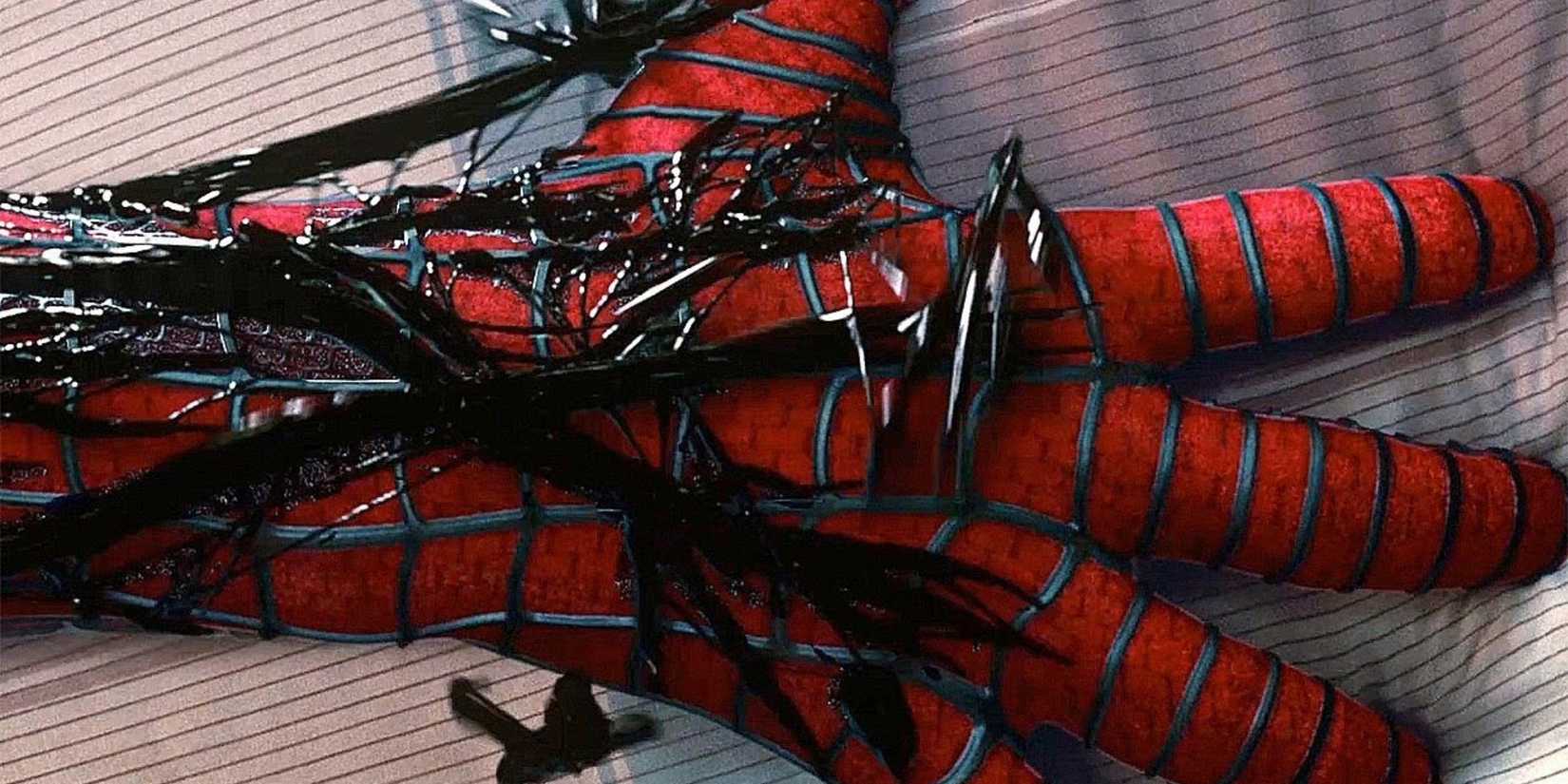Thirty years ago, Spider-Man: The Animated Series redefined everything fans knew about Spider-Man’s most iconic transformation. The black suit, the alien Symbiote, and the rise of Venom are now permanent fixtures in the Spider-Man mythos, appearing in everything from Sam Raimi’s Spider-Man movie trilogy to the PlayStation game Spider-Man 2. However, these elements didn’t always exist in this familiar form.
Most Spider-Man fans, from lifelong comic readers to those who first met Peter Parker through the movies, know the story of Spider-Man’s black suit well. A strange alien substance crashes to Earth on a meteor, bonds with Peter, and gives him new powers, but at a terrible cost.
Surprisingly, though, the version everyone remembers wasn’t in the original Spider-Man comics. While the Alien Costume arc in The Amazing Spider-Man #252-263 from 1984-1985 introduced the black suit, the definitive version didn’t emerge until a decade later.
That happened in Spider-Man: The Animated Series. The 1995 three-part episode “The Alien Costume” took the bones of that comic arc and reimagined it with deeper emotion, stronger character arcs, and cinematic flair. It introduced the darker, more conflicted side of Spider-Man, and cemented the Symbiote storyline as one of the greatest chapters in the hero’s history.
Spider-Man: The Animated Series Introduced The Definitive Symbiote Suit Arc
The 1990s Cartoon Perfected The Story Of Spider-Man’s Black Suit
When Spider-Man: The Animated Series premiered in 1994, fans expected a fun, faithful take on Marvel’s most famous hero. What they didn’t expect was for it to completely redefine one of the most important arcs in Spider-Man history. “The Alien Costume” trilogy, which aired in 1995, became the definitive telling of the Symbiote saga, one that would echo across decades of storytelling.
In the comics, Spider-Man’s black suit first appeared in Secret Wars #8 (1984), where Peter Parker discovered a mysterious black substance on an alien planet. It wasn’t until later that readers learned it was a sentient being, a Symbiote. Initially, the black suit was simply a sleek costume with new abilities, and its sinister nature emerged gradually over subsequent issues.
The suit would later return to comic pages in 1984’s The Amazing Spider-Man #252. This version of the story is definitely more in keeping with the narrative Spider-Man fans know. There were many notable differences too though, from the absence of Eddie Brock to the fact that the Symbiote Suit didn’t make Peter Parker more aggressive or alienate him from his loved ones.
10 years later, the story would be told again in Spider-Man: The Animated Series. However, the 1990s Spider-Man cartoon didn’t just adapt the Symbiote Suit storyline – it reinvented it. The show introduced the now-iconic concept of the Symbiote crashing to Earth on a meteor, instantly creating a more grounded, cinematic origin.
Crucially, Spider-Man: The Animated Series also introduced the idea that the Symbiote amplified Peter’s darker impulses.
The meteorite’s impact aboard a space shuttle carrying John Jameson directly tied the alien to Spider-Man’s world and gave the arc emotional stakes right from the start. Crucially, Spider-Man: The Animated Series also introduced the idea that the Symbiote amplified Peter’s darker impulses.
This wasn’t just a suit that boosted his powers, it warped his mind. Fans saw Peter grow more aggressive, impulsive, and arrogant, alienating loved ones like Mary Jane Watson and Aunt May. That psychological angle transformed what had been a straightforward costume change into an intense character study.
Another major change was how the show positioned Eddie Brock. Rather than introducing him late, as in the comics, the series wove him into the story from the beginning. Eddie’s resentment toward Peter built steadily, culminating in the Symbiote bonding with him, a payoff that felt earned and deeply personal.
By blending science fiction, emotion, and moral complexity, the animated series gave Spider-Man’s black suit story true depth. It established every major beat fans now expect: the meteorite crash, the corrupted hero, the desperate struggle to remove the Symbiote, and the birth of Venom. It wasn’t just an adaptation, it was the blueprint.
The 1990s Spider-Man Cartoon Laid The Foundations For The Venom Fans Know And Love
The Show Turned Eddie Brock Into A Complex Rival Rather Than A One-Dimensional Villain
Before Spider-Man: The Animated Series, Venom was more of a concept than a fully realized character. In the comics, Eddie Brock was introduced as a disgraced journalist whose hatred of Spider-Man led him to merge with the Symbiote. The 1990s cartoon took that idea and transformed it into something richer, something that defined Venom for generations.
The series gave Eddie Brock clear motivations and emotional depth. Voiced by Hank Azaria, this Eddie wasn’t just a random enemy of Spider-Man, he was a professional rival. By making him a fellow journalist competing with Peter Parker for photos at the Daily Bugle, the show added a layer of realism and tension.
Brock’s fall from grace, caused by Spider-Man’s actions, made his eventual transformation into Venom both tragic and inevitable. By tieing Eddie Brock to the Black Suit storyline from the start, too, Spider-Man: TAS cemented him as essential to the entire arc (in the comics, Venom didn’t appear until 1998’s The Amazing Spider-Man #300, years after Peter got rid of the black suit).
The cartoon also explored the Symbiote’s sentience more deeply than the comics had at that point. The way the black suit whispered to Peter, feeding his ego and anger, felt more like psychological horror than superhero adventure. When it eventually found Eddie, the bond was portrayed as two broken beings completing each other, a dark mirror of Peter’s earlier struggle.
Even Venom’s design and personality in the series set the tone for the future. With his hulking build, monstrous voice, and chaotic energy, the animated Venom became the archetype for nearly every adaptation that followed. His dual identity, with Eddie and the Symbiote speaking in unison, gave him a terrifying sense of power and unity that still defines the character today.
Perhaps most importantly, the show made Venom sympathetic. Beneath the monstrous exterior, Eddie’s pain was human. His jealousy, rage, and desperation made him more than a villain – he was a tragic figure corrupted by forces beyond his control.
That emotional complexity has been echoed ever since, from Tom Hardy’s portrayal in Sony’s Venom movie trilogy to the conflicted antihero that leads his own solo series in modern Marvel comics. In short, Spider-Man: The Animated Series didn’t just bring Venom to life, it gave him a soul.
Every On-Screen Spider-Man & Venom Adaptation Since Has Borrowed From The Animated Series
The Black Suit Story Fans Know Today Comes Straight From The 1990s Cartoon
It’s impossible to overstate how much Spider-Man: The Animated Series influenced every modern adaptation of Spider-Man’s Symbiote story. The DNA of “The Alien Costume” can be found in movies like Spider-Man 3 and Venom, games like Spider-Man 2, and countless animated adaptations that followed Spider-Man: TAS. Nearly every retelling borrows the beats, tone, and emotional core established in the 1990s cartoon.
Sam Raimi’s Spider-Man 3 follows almost the exact same structure: a meteor crash brings the alien Symbiote to Earth, it bonds with Tobey Maguire’s Peter Parker, enhances his powers while corrupting him, and ultimately finds its true host in Topher Grace’s Eddie Brock. The idea of the Symbiote amplifying Peter’s darker traits – arrogance, vengeance, and pride – comes directly from the animated show.
Even Sony’s Venom movie trilogy owes much to the cartoon’s portrayal of Eddie Brock as a flawed, humanized antihero. The animated series showed that Venom could be more than a villain, he could be a conflicted protagonist with his own moral code. That blueprint made the transition to standalone Venom films possible decades later.
The influence extends to video games as well. In 2023’s Spider-Man 2, for example, the Symbiote arc centers on themes of temptation, addiction, and identity, echoing the emotional turmoil first seen in the animated series. This version of the story even pays homage to Peter’s internal battle and the haunting moment he rips the suit off in agony, an image burned into fans’ memories since 1995.
Other animated adaptations, from Spectacular Spider-Man to Ultimate Spider-Man, continue to echo the 1990s version’s framework. Each iteration refines the visuals and storytelling, but the foundation remains the same: the Symbiote isn’t just a monster, it’s a reflection of Peter Parker’s darkest self.
Three decades later, the black suit saga still defines Spider-Man’s mythos, and it all traces back to one groundbreaking cartoon that dared to treat Saturday morning storytelling with cinematic ambition and emotional weight. Spider-Man: The Animated Series didn’t just adapt the comics, it elevated them, ensuring that Spider-Man would never be the same again.

- Release Date
-
1994 – 1998
- Network
-
FOX, Fox Kids
- Directors
-
Bob Richardson
-

Christopher Daniel Barnes
Peter Parker / Spider-Man (voice)
-

Sara Ballantine
Mary Jane Watson (voice)
This story originally appeared on Screenrant



